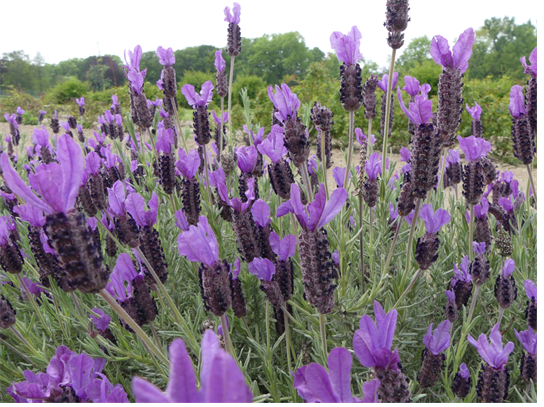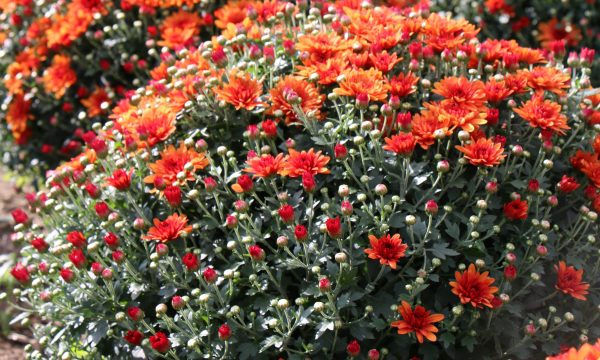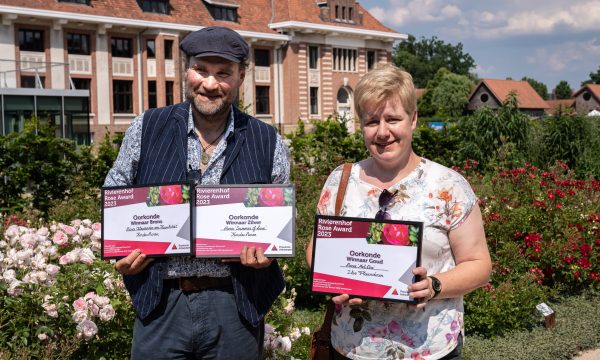Press release PhD shows path to frost-resistant lavender for our gardens

Lavender is one of the most traded drought-tolerant garden and patio plants in our area. A downside until now is that many originally Mediterranean lavender species (e.g. butterfly lavender) freeze to death during our winters. This is changing with the doctorate of Ewout Van Oost (ILVO - UGent). Through genetic and physiological research in a large collection of lavender varieties, the researcher was able to identify the most frost-tolerant species, as well as determine the parameters and methods for testing frost tolerance.
Ewout Van Oost: "We can now reliably measure frost resistance in large groups of plants. Ornamental plant breeders can now quickly predict which of their crosses will lead to new, frost-tolerant lavender cultivars, which of course are also still beautiful as well as drought-tolerant."
Ornamental tree growers with ambition
The Flemish nursery owners of the BEST-Select innovation network funded this doctoral research. Lavender has excellent drought tolerance combined with attractive flowering and has been doing well in gardens since the climate has started changing. Admittedly it's often used as an annual patio plant, due to its sensitivity to frost. Its increasing popularity is motivating growers to pursue further improvements. Lucas De Nolf, president of BEST-Select, says: "We see the demand for lavender plants rising sharply and with new and fast tools, we can select more and better cultivars useful as perennial garden plants in the colder regions in Europe, America and other parts of the world."
The "makers" of future lavender cultivars know what to do: high on the wish list are beautiful flower types such as the lovely flowers of butterfly lavender (Lavandula stoechas). Exactly that species is not yet resistant to freezing, and thus for the time being in our regions only suitable as an annual balcony or terrace plant. In addition, the plants must have or maintain good drought tolerance and disease resistance. Finally, the plants should not age too quickly, which would lead to stiff, bare branches and are preferably compact.
Fascinating genetic and experimental quest
During his PhD, Van Oost studied the genetic background of 84 lavender types, of both wild species, garden and terrace types, using various molecular techniques. On this basis, he found 5 genetic groups and discovered which groups are easy to cross with each other, in order to introduce frost tolerance genes into the beautiful but sensitive lavender types.
After crossing plants, the challenge is to quickly screen the offspring for ability to withstand frosts. The researcher developed methods to determine winter hardiness of lavender, both in the field and in a freezing chamber. Seedlings of all varieties were observed outdoors for 4 winters. The very sensitive plants did not survive the winter. On the other hand, natural freezing was not enough to identify the very strongest frost resistance. So the plants were also tested in parallel in the lab in controlled freezing experiments. In each case, the degree of frost damage was determined. The most tolerant plant, common garden lavender (Lavandula angustifolia), was able to survive up to a temperature of -19.4°C, while the more sensitive species, such as butterfly lavender (Lavandula stoechas) and tooth lavender (Lavandula dentata), froze to death as early as -2.9°C.
Ready-to-use measurement methods
The most accurate method of measuring frost resistance appears to be the measurement of cell sap leakage. This method measures the damage and cracks that sharp ice crystals cause in the plant cell, causing electrolytes to leak from the cell. The technique is suitable for measuring minute differences in frost resistance between varieties, but is difficult to apply to larger quantities of plants. For evaluation of large populations, measuring chlorophyll fluorescence on leaves of cold-acclimated plants in the field is the best technique. This method measures the efficiency of leaf photosynthesis, as this efficiency decreases in plants experiencing cold stress.
Finally, the researcher discovered the usefulness of the leaf water content parameter. "Searching for the underlying reason why certain plants withstood freezing better than others, I observed remarkable differences between frost-tolerant and frost-resistant lavender in terms of water content in the leaves," says Van Oost. In frost-tolerant plants, the amount of water in leaves drops dramatically during the fall in preparation for the winter cold. This process is called cold-acclimation. Frost-sensitive species are clearly less good at this adaptation strategy. Moreover, at freezing temperatures, the stems of frost-sensitive plants also appear to suffer from air bubbles, called emboli, that are formed in the water-transporting vessels. Those air bubbles block sap flow, leading to wilting. Thus, measurements of water content in the leaf and air bubble formation in the stem are useful parameters that help select frost-tolerant lavender seedlings from a wide range of crosses.
Three future predictions
This PhD on frost tolerance within the genus Lavandula will henceforth accelerate the breeding process towards improved winter hardiness in lavender and allow for more targeted work.
In addition to lavender, the proposed methodology and findings are applicable to a wider range of Mediterranean perennials to develop more resilient garden plants.
ILVO itself has breeding programs for lavender and other woody ornamental plants. It is expected that new cultivars of plants such as lavender, adapted to the current climate, can be valorized in the ornamental plant market within a few years.
Promotors
Prof. Dr. Bert De Rybel (VIB & UGent)
Dr. Leen Leus (ILVO)
Dr. Katrijn Van Laere (ILVO)

This research was accomplished with the financial support of BEST-select.


